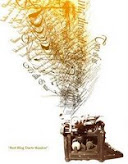It’s difficult to show a 3D image on a flat sheet of paper but that is just what many artists do. One technique for creating the illusion of 3D is perspective. Many of you have explored perspective in art already. One popular art project is to draw a street with buildings lining both sides. The street narrows and buildings become smaller to show distance. If you have not yet tried this project you should do so. It will be usual for comparing to the project I have written below. Check out the video clip and the clear directions on this site to get you started.
Yesterday you read about how Gustave Caillebotte used perspective in an uncommon way. He made the image look like it was tilted toward the eye. Today, I’ll show you how he did this so you can try it yourself.
Caillebotte uses a few techniques to create his strange perspective. Firstly, you’ll notice that the foreground is not boxed in on the edges by the sides of bulky buildings. Secondly, the objects in the background are slightly smaller than they ought to be. This makes the foreground subjects look larger than they are, and it makes the background look farther away. Because of this, the street (or river, or floor, or whatever) doesn’t need to taper off into nothingness to show distance (like in your original perspective project).
Check out the video clip on this site to get you started on your project.
Supplies Needed
Pencil
Colored pencils, crayons, or pastels
Paper
Begin by drawing your street. This time, don’t start the street at the corners of your paper. Set your outside lines slightly above the bottom corners. Let your road narrow more quickly than in your original drawing but don’t bring the end of the road to a point.
Line the road with simple square buildings. You can, of course, get as creative as you want with your buildings but simple buildings will demonstrate perspective just as well. Your buildings should shorter more quickly than in your first drawing.
Now decorate and color. If you want to really Caillebotte’s brand of perspective, try drawing some cars driving into the distance. Be sure to make foreground cars much larger than background cars.
Compare your two drawings and notice the differences between the two. How do the slight changes in method create large differences in the final picture?
Wednesday, February 13, 2008
Subscribe to:
Post Comments (Atom)








2 comments:
Surprising that you had to wait until the 15th century (I believe) before the perspective was "invented"!
Before painters used perspective, they either painted important objects larger than less important objects, or they just overlapped objects.
Perspective was discovered in the 5th century but it was just a vague, mathematical idea. In the 11th century, perspective was explored further by mathematicians. Then, as you say, Peter, in the 15th century artists began to incorporate the idea in their work.
And no, I didn't just know that off the top of my head. I had to look it up. But I'm glad I did because it is strange that, even though people have been using their eyes in the same way and processing sights in the same way for thousands of years, it was only a few hundred years ago that we began to understand perspective.
Thank you for this valuable comment.
Post a Comment